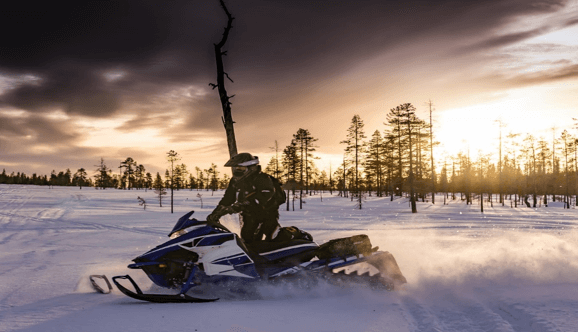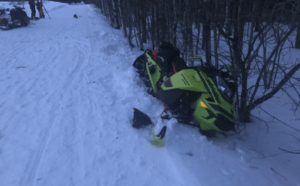It wasn’t until the 1920s that someone came up with the idea of using snowmobiles for anything other than rescue missions. Initially, the snowmobile was designed to carry people and cargo across locations where thick snowfall made passage difficult or impossible for other vehicles. Snowmobiling has emerged as one of the most well-liked winter sports.
Snowmobiles of today are massive, high-powered, and lightning-fast vehicles. Some of the snowmobiles currently available in the marketplace have engines with capacities of up to 1200 cc, which allow them to generate up to 150 horsepower and achieve top speeds of about 150 miles an hour. Additionally, modern snowmobiles can weigh about 700 pounds.
Accidents involving snowmobiles account for around 200 fatalities and 14,000 injuries per year. Alcohol, excessive speed, lack of good judgment, and a lack of expertise behind the wheel are frequently listed as the primary reasons for collisions.
Factors caused for snowmobile accidents
A wide variety of factors can cause accidents involving snowmobiles. Snowmobile drivers frequently cause accidents by colliding with trees, property, motor vehicles, and other immovable objects. Unanticipated dangers lurking on private lands and public routes alike might also contribute to the occurrence of accidents.
Snowmobiles are vulnerable to collisions with automobiles, lorries, and other vehicles, which can result in severe and even fatal injuries. Snowmobiles have the potential to collide with wildlife, including deer and other animals.
Accidents involving snowmobiles can also be caused by incorrect servicing or maintenance of the snowmobile, faults in the manufacturing process, or risks involving ice or water.
Also Read This: 5 Tips for Starting Your Own Transport Business
Some facts and figures about snowmobiles that you might find interesting are as follows.
- The snowmobile industry in the United States is responsible for more than $26 billion in annual revenue.
- Each year, the snowmobile business in Canada earns $9.3 billion in revenue.
- Each year, the snowmobile markets in Europe and Russia generate a combined total of $5 billion.
- The snowmobile business in North America is responsible for more than 100,000 full-time jobs.
- During the winter months, snowmobiles serve as the primary mode of transportation in certain communities in the United States and Canada.
- Each year, the typical snowmobiler uses about $4,000 for activities and entertainment related to their hobby.
- A household that participates in snowmobiling earns an annual average income of $68,000.
- Snowmobiling generates an annual economic benefit for the state of Wyoming that is greater than $175 million and provides more than 1,000 employment opportunities.
- In the year 2020, there were 123,862 snowmobiles sold worldwide.
- In 1915 and 1916, inventors of contemporary snowmobiles were awarded their first patents for their ideas.
- The earliest iterations of a machine that could go on snow consisted of a sled propelled by a spinning propeller as well as a Model T Ford automobile that had skis and tracks attached to it.
- Bombardier snowmobiles were designed to accommodate several passengers at once and more closely resembled Snow-Cats of today than traditional snowmobiles.
- In the middle of the 1950s, Polaris was the first company to put a new snowmobile model into mass production. This model was known as the Snow-Traveler.
- The earliest snowmobiles had just approximately 5 horsepower at their disposal.
- There are over 600,000 registered snowmobile riders in Canada, while the United States only has 1.4 million registered snowmobile users.
- The typical age of a person who rides a snowmobile is 44 years old.
- Men account for 70 percent of riders, while women make up 30 percent of the total.
In case you have been involved in a snowmobile accident you need to contact a lawyer, visit this website to learn more.




![1000 Girl Attitude Names for Truecaller ID | UPDATED [Included Boys Names] 1000 Attitude Names for Girls on Truecaller](https://edutechbuddy.com/wp-content/uploads/2025/05/ChatGPT-Image-May-21-2025-11_59_39-PM-1-150x150.png)








![1000 Girl Attitude Names for Truecaller ID | UPDATED [Included Boys Names] 9 1000 Attitude Names for Girls on Truecaller](https://edutechbuddy.com/wp-content/uploads/2025/05/ChatGPT-Image-May-21-2025-11_59_39-PM-1.png)